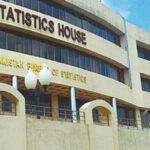KARACHI: Despite the Economic Coordination Committee of the Cabinet’s decision to raise the sales tax from 18% to 25%, consumers have not demonstrated any desire to reserve ahead of time or purchase vehicles with cash.
In order to impose the increase in general sales tax on domestically manufactured automobiles with displacement of 1,400cc and above that have an ex-factory price of Rs4 million or more, the caretaker administration is yet to issue a statutory regulatory order (SRO).
Authorized dealers, who wished to remain anonymous, stated that one of the reasons there wasn’t any panic buying was because people had previously bought cars in January due to a model year change.
Car, LCV, jeep, and van sales increased by 81 percent in January 2023 to 10,536 units following 5,816 in December of the previous year.
They claimed that many potential customers are reluctant to acquire new models during 7MFY24 because of the vehicles’ already exorbitant costs and costly financing.
The government increased the GST from 18% to 25% in March 2023 on domestically constructed SUVs, as well as locally manufactured cars with engines that can run at 1,400 cc or more and double cabin (4×4) pick-up trucks.
The recent ECC ruling has rattled auto assemblers including their suppliers, who believe it would further worsen the already sagging sales of domestically manufactured cars.
According to Abdul Rahman Aizaz, chairman of the Pakistan Association of Automotive Parts and Accessories Manufacturers (PAAPAM), car sales have already dropped to just 30% of FY22 levels as a result of the government’s March 2023 decision to raise GST in addition to other taxation measures and the depreciation of the currency. Along with hindering the production of auto parts and resulting in employment losses, this drop has also reduced the amount of absolute taxes collected from the automobile industry.
Rising energy costs, a currency devaluation of more than 160 percent in only six years, extraordinarily high credit rates, and a tax of more than 40 percent on each car sold have already reduced sales to just 100,000 cars and SUVs out of 500,000 installed, according to the head of PAAPAM.
“The prices of small-size sedans would exceed the purchasing capacity of the middle class in the country if the GST was raised to 25 percent.” In addition to harming the consumers, it would result in lower tax revenue because of a predicted decline in sales.
Speaking from a different angle, a representative of the industry noted that the government’s decision to eliminate a long-standing oddity in the GST law is a positive step.
He remembered that although the SRO did not specify what constituted “luxury” in terms of car price, the GST was increased in March 2023.
He continued by saying that the state has now established a threshold of Rs. 4 million, net of applicable GST, for a vehicle to be classified as luxury, thus eliminating the anomaly and creating a level playing field.
Cars under 850cc will still be subject to 12.5 percent tax, but cars up to 1,000cc including sedans under 1400cc that cost less than Rs four million would be subject to 18 percent tax. Hybrid cars will still receive an 8.5 percent GST.
SOURCE: DAWN NEWS








